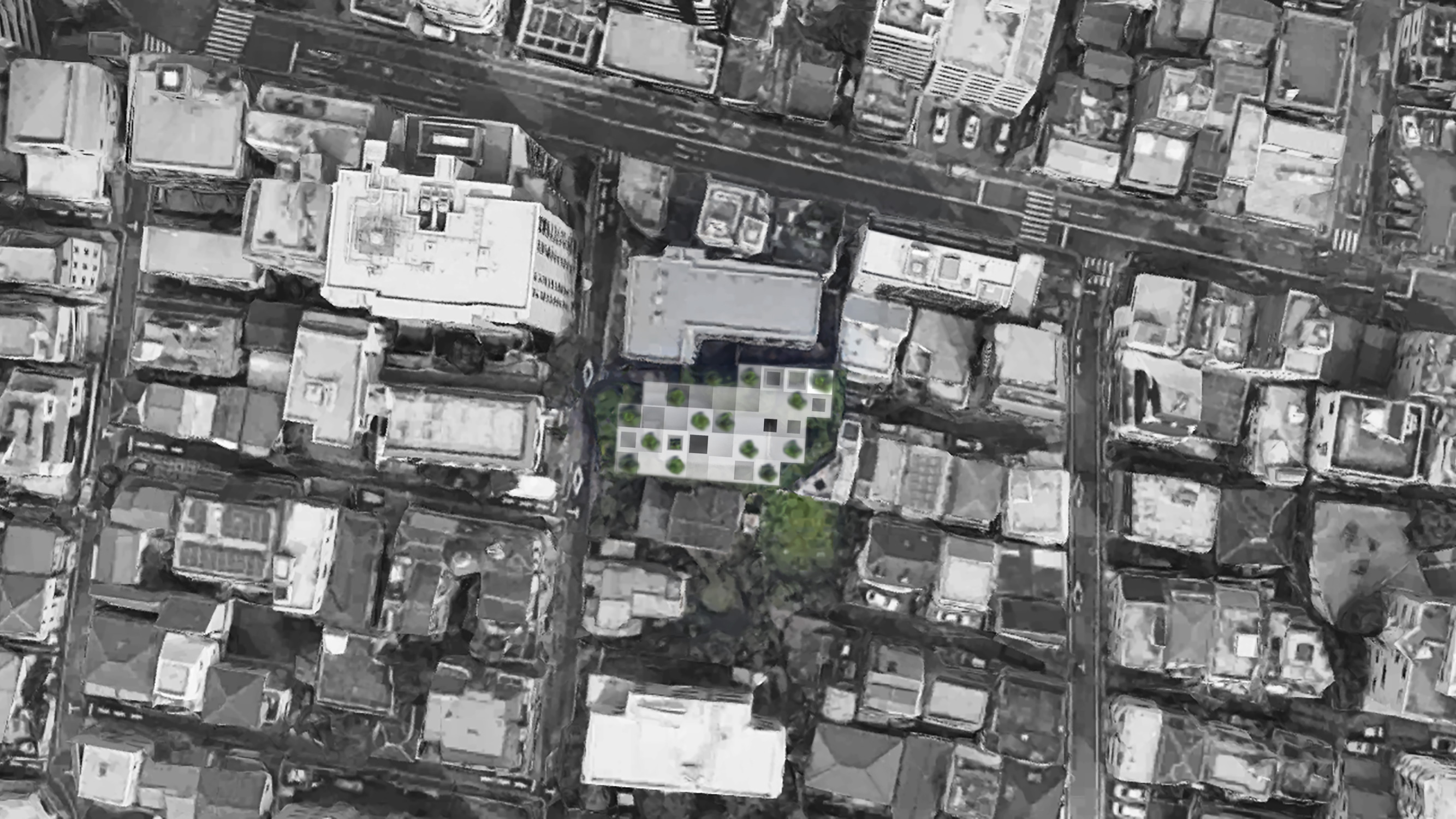Y Project in Kagurazaka
Shinjuku, Tokyo, Japan, 2017—2018
The clients, a couple, approached FBA with the desire to turn their home, which had become too large after the children had left, into a place that could sustain them, both physically and mentally, for the coming decades: “(How) can we turn a house which has become an empty shell into a dynamic building which not only makes money (our pension) but keeps us alive?”
TWO PEAKS
Located in a side street of Kagurazaka, central Tokyo, the site straddles two zones of building regulations, one rather strict, the other quite permissive. Despite the opportunities these areas between tall (adjacent to a commercial street) and low (residential) buildings have, the usual reaction is a closed mass resulting in claustrophobic interiors and urban leftovers. With the zoning boundary passing through the site, the maximum buildable volume is an intriguing form with a high and a low peak and a valley between.
NEW LIFE
The desired program is ambitious: On ground level, a restaurant to lure life (people) into this side street; at the top level: the clients’ own apartment; flats they can rent out in the levels between; underground, a martial arts dojo. Site and budget allow for about 1,200 m². Feasibility studies to extend the existing house, a 3-storey timber structure of about 350 m², lead to the sobering conclusion which all tried to avoid: start from scratch.
REAL MAX
Sensing the opportunity of being in two regulatory zones, we voxelate the maximum volume into cubes with 3-metre edges, the minimum size to carry the potential to be filled with all of the brief’s requirements. In a game-like process of adding and subtracting, the volume turns from theoretical to accessible maximum.
BREATHING
The sides of these cubes vary from filled (wall) to leaving only the absolute minimum (column/beam) or disappear altogether to open up pockets. Inside and outside are no longer separated by walls but fade into each other through varying degrees of porosity. Between a uniform, finely structured grid, varying scales of openings breathe in individual rhythms. The built is the framework, the template for the diversity of life.
Shinjuku, Tokyo, Japan, 2017—2018
Type
Status
Team
Florian Busch, Sachiko Miyazaki, Shogo Nagata, Mayo Shigemura
Structural Engineering: OAK (Masato Araya)
Size
GFA: 999 m²
Terraces: 202 m²
Structure
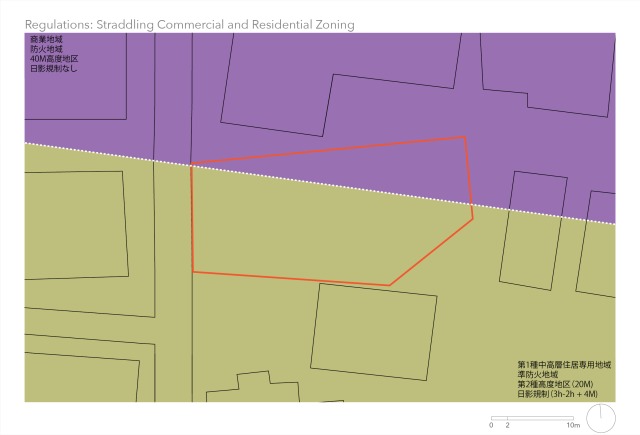
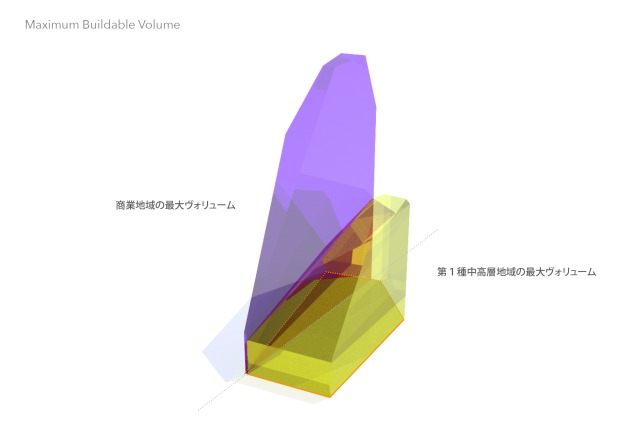

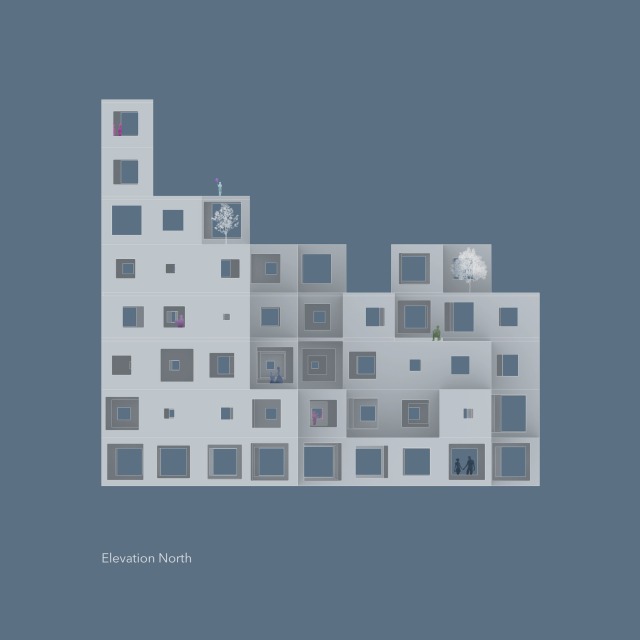
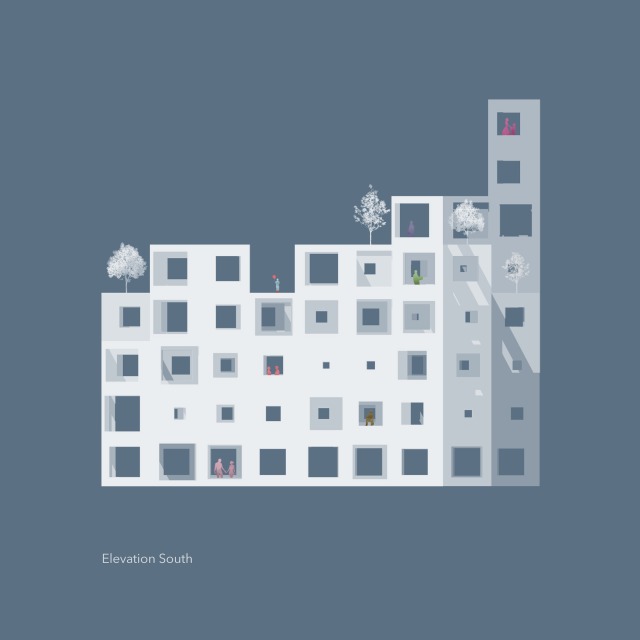
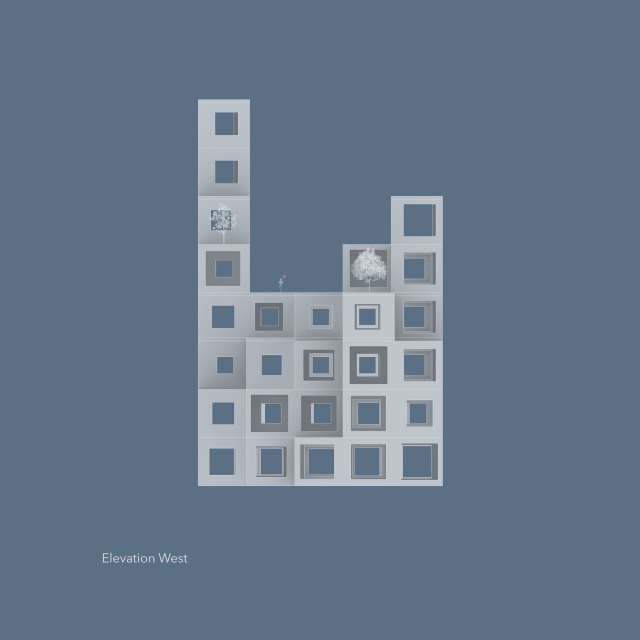
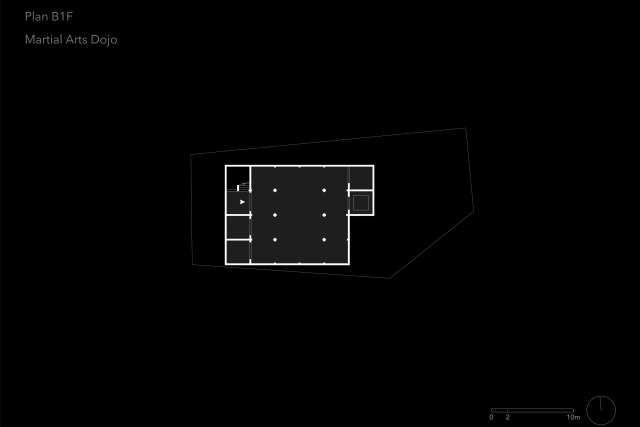

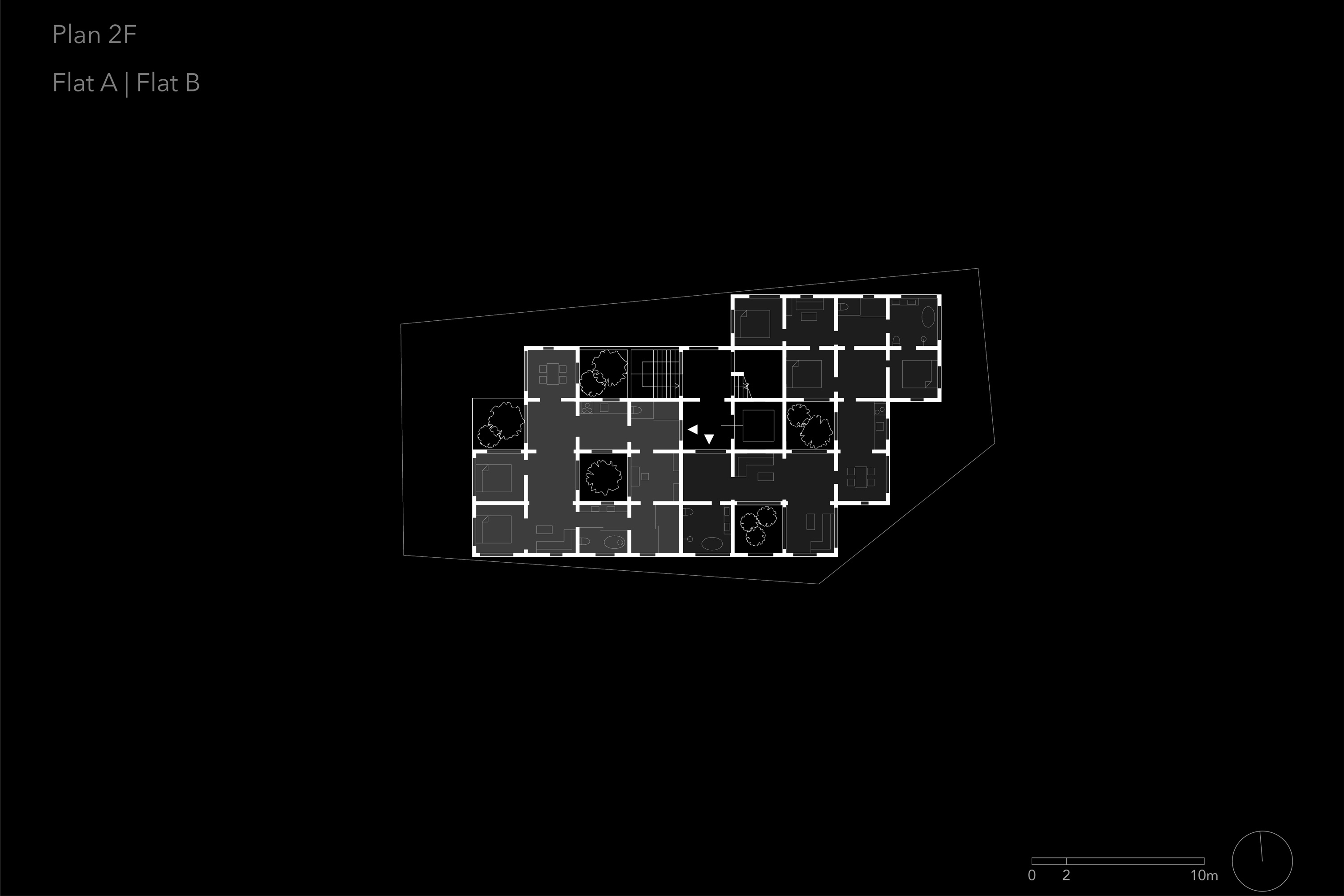
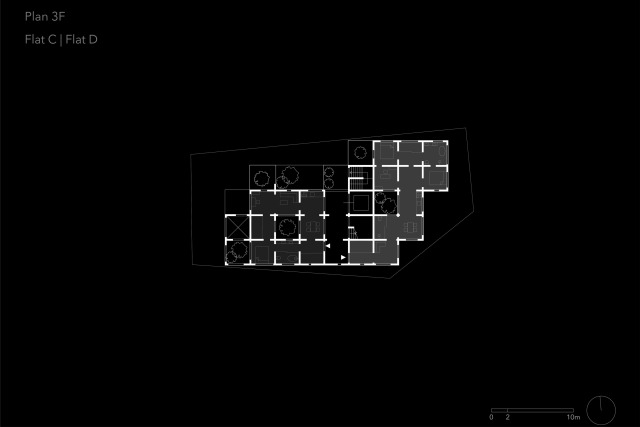
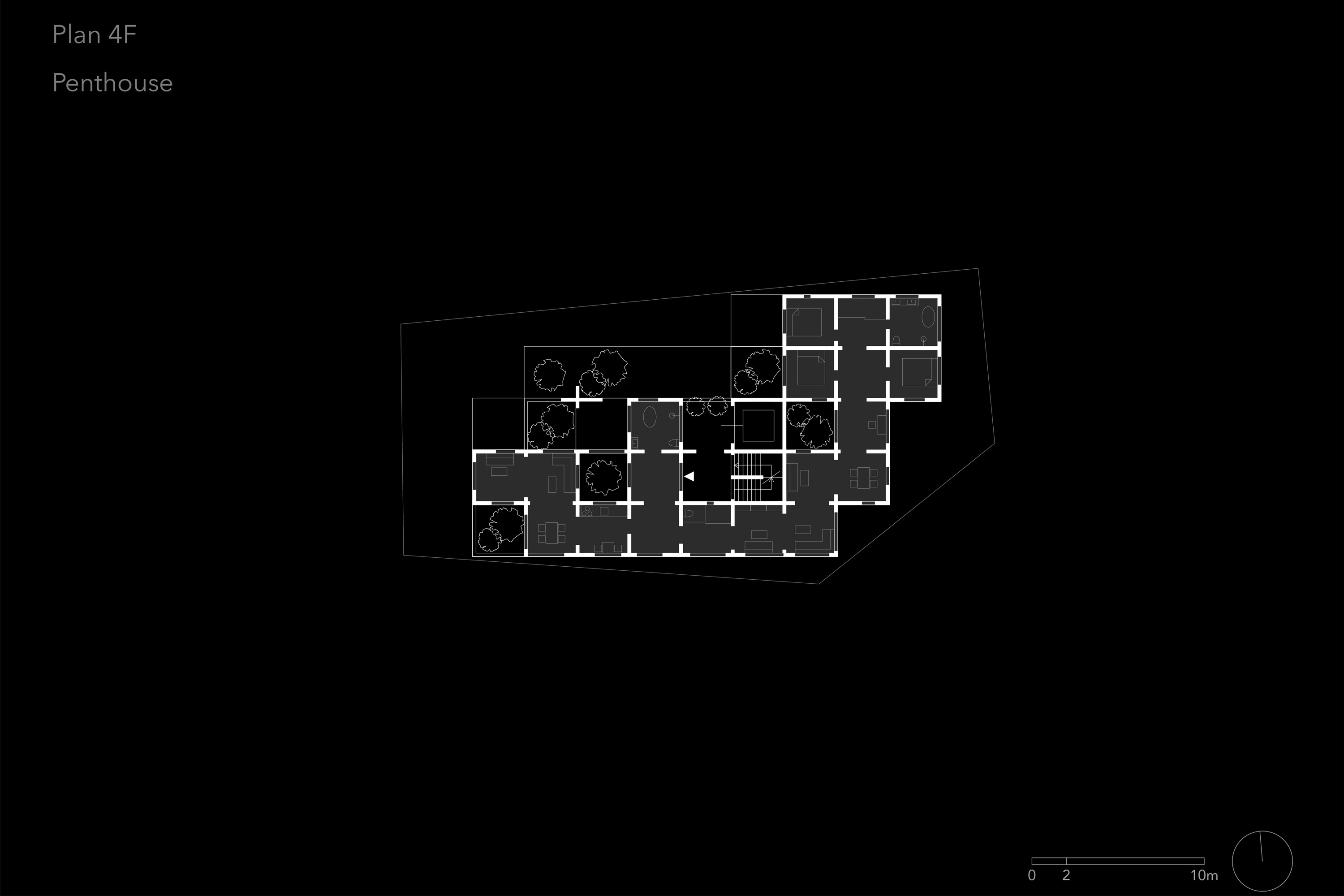

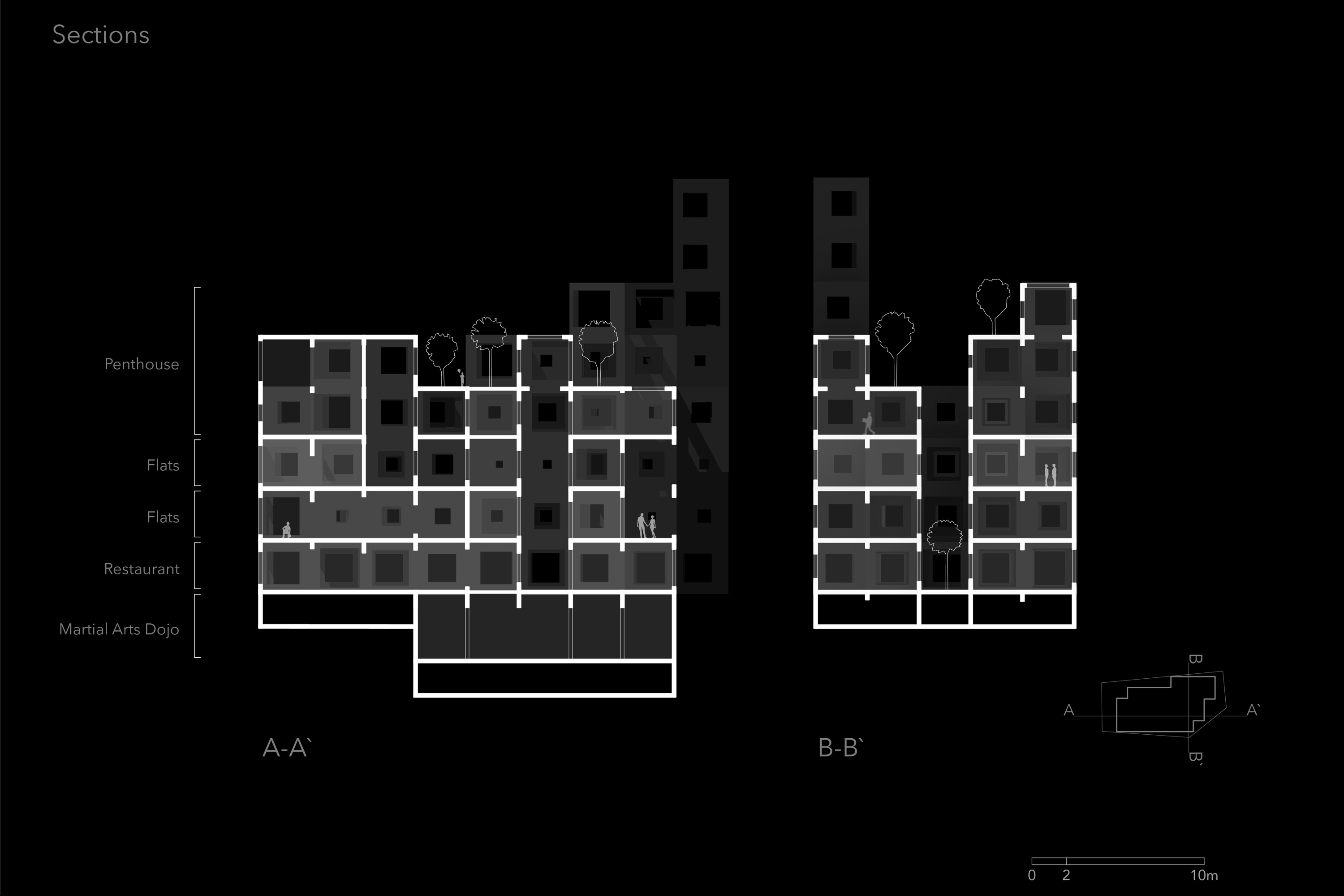
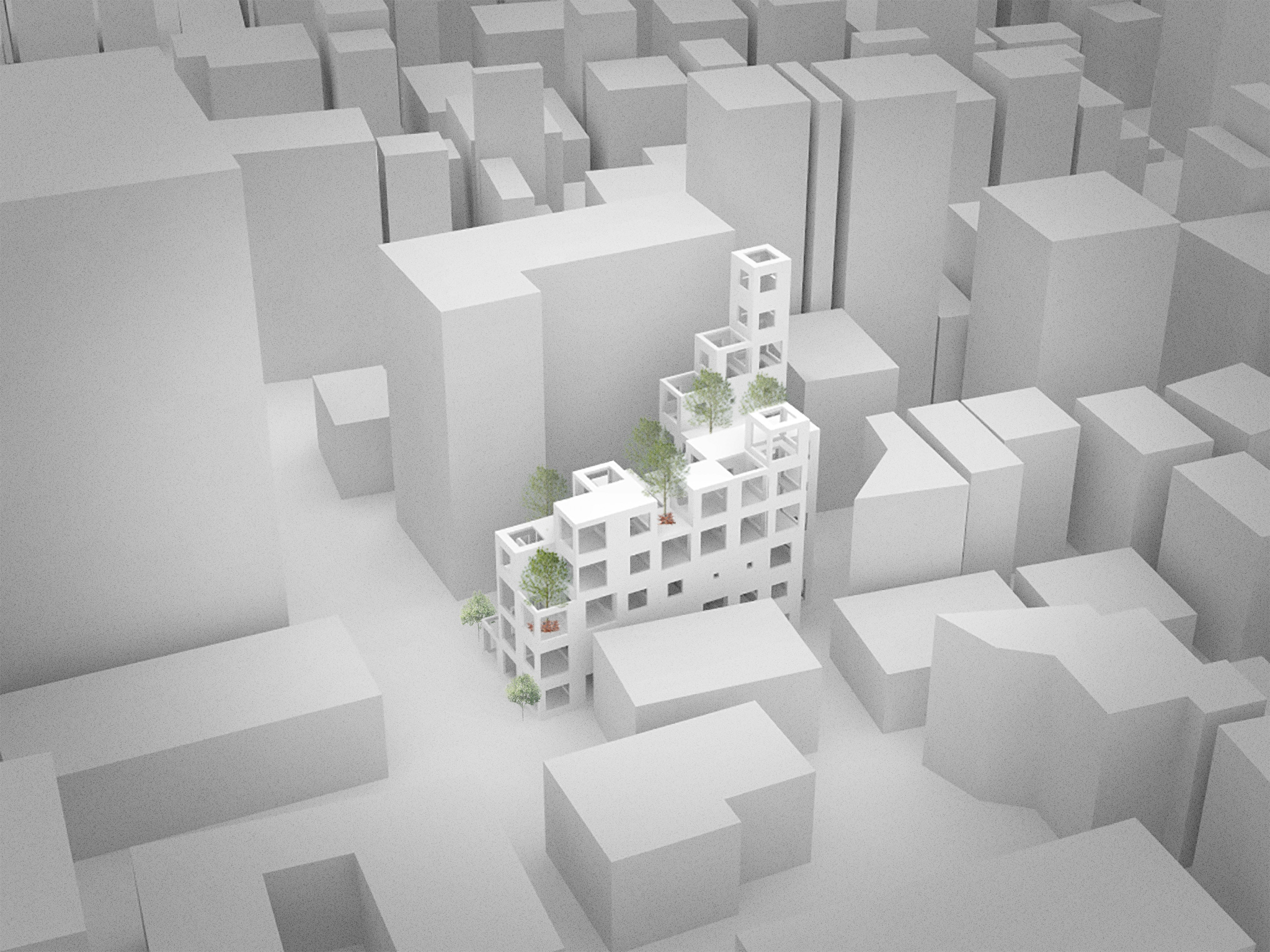
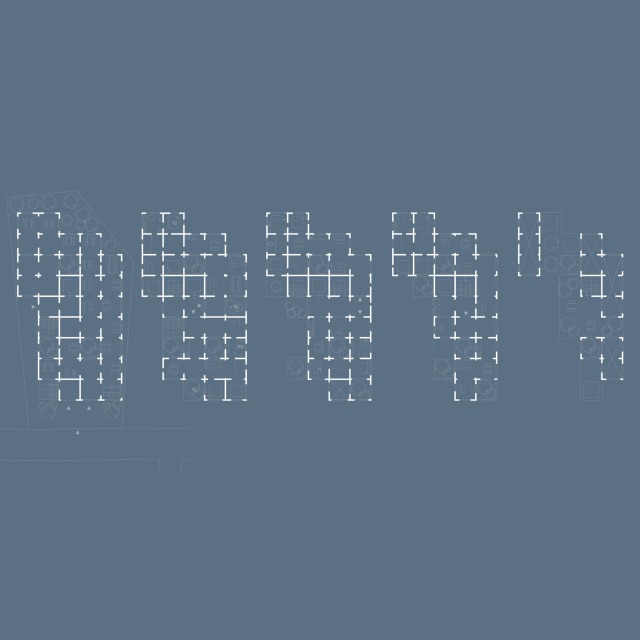
publications
Related Projects:
- Nobori Building, 2021—2023
- Warehouse 3, 2022
- CnP Project, 2018—2020
- Kita Unga Hotels, 2019
- I'T, 2019
- Y Project in Kagurazaka, 2017—2018
- Kiso Town Hall, 2017
- Taichung City Cultural Center, 2013
- Echigo Tsumari Australia House, 2011
- Tokyo Designers Week 2011, 2011
- The Rings of Dubai, 2009
- RG Project, 2009
- Villa T, 2021—2025
- House W in Nakafurano, 2022—2024
- House of Voids, 2022—2024
- House in Sanbancho, 2023—2024
- Nobori Building, 2021—2023
- House I in Arishima, 2020—2023
- House in Nagatadai, 2021—2023
- I House in Izu-Kogen, 2019—2021
- Hirafu Creekside, 2021
- House in the Forest, 2017—2020
- Y Project in Kagurazaka, 2017—2018
- K House in Niseko, 2015—2017
- S House in Chiba, 2011—2015
- Our Private Sky, 2013
- L House in Hirafu, 2010—2013
- BL Project, 2012
- ‘A’ House in Kisami, 2009—2012
- House that opens up to its inside, 2011—2012
- House in Takadanobaba, 2010—2011
- F&F Project, 2011
- House on the Slopes, 2011
- Toké 7, 2010
- Two Roofs in the Snow, 2009—2010
- House in Karuizawa, 2009
- RG Project, 2009
- Nobori Building, 2021—2023
- Warehouse 3, 2022
- Y Project in Kagurazaka, 2017—2018
- K8, 2014—2015
- Zucca Restaurant, 2012
- RG Project, 2009
- Y Project in Kagurazaka, 2017—2018
- The Floating Stadium, 2016—2017
- BL Project, 2012
